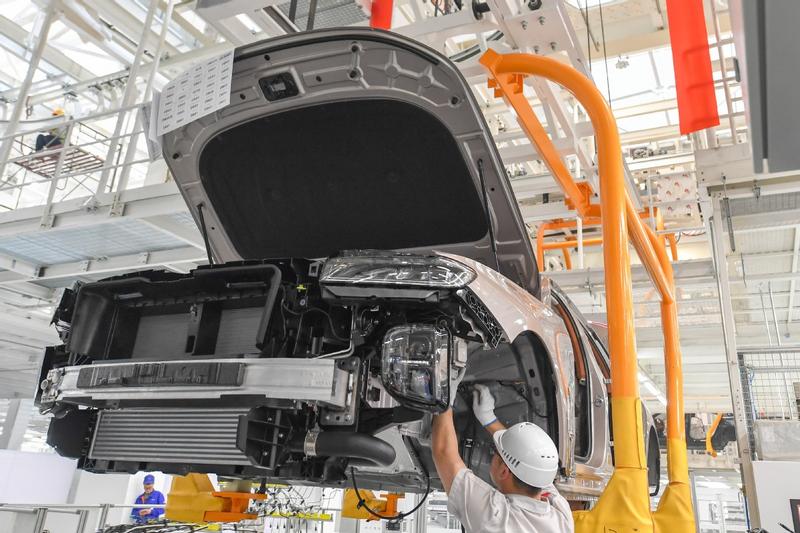 In this September 2020 file photo, an FAW employee works on an assembly line in Changchun, Jilin province. (PHOTO / XINHUA)
In this September 2020 file photo, an FAW employee works on an assembly line in Changchun, Jilin province. (PHOTO / XINHUA)
China will promote the structural adjustment of State-owned economy by advancing mixed-ownership reform, and enhancing cooperation between State-owned enterprises and private companies during the period of the 14th Five-Year Plan (2021-25), officials said on Monday.
Weng Jieming, vice-chairman of the State-owned Assets Supervision and Administration Commission of the State Council, said the government will deepen the mixed-ownership reform in an active yet steady way, as the country will announce the three-year action plan for SOEs soon
Weng Jieming, vice-chairman of the State-owned Assets Supervision and Administration Commission of the State Council, said the government will deepen the mixed-ownership reform in an active yet steady way, as the country will announce the three-year action plan for SOEs soon.
The government will adhere to the principles of implementing such reform in accordance with local conditions, industries and enterprises. It will adopt corporate forms of sole proprietorship, majority control or equity participation-whatever fits. The government will improve governance and introduce more incentives to deepen mixed-ownership reforms in a differentiated manner, based on companies' structure and industry categories, he said.
The three-year action plan is designed to implement the measures outlined by the 19th National Congress of the Communist Party of China in late 2017 to push the SOEs to adapt themselves to the market-oriented and law-based rules and norms in the new era as soon as possible and assume greater responsibility in an open and innovative environment.
ALSO READ: Certification firm gets nod as central SOE
Weng said that the mixed-ownership reform has been actively and steadily carried out over the past several years, and the role of State-owned capital has been further enriched.
Since 2013, China has completed more than 4,000 cases of mixed-ownership reform with more than 1.5 trillion yuan (US$224.1 billion) of non-State capital involved, according to the information released by the commission on Monday.
As a next step, Weng stressed that SOEs will form more partnerships with private companies, in particular the small and medium-sized enterprises, as they will boost synergetic innovation among all small, medium-sized and large companies.
By partnering with private businesses, China's centrally-administrated SOEs have initiated 214 strategic alliances for industrial technology innovation and built 54 internet-connected industrial platforms, said Peng Huagang, secretary-general of the SASAC.
"Guided by mutually beneficial market operations, SOEs will actively enhance all-around cooperation with them, serving as the national team in stabilizing the industrial chain for the long run," he said.
Through industrial funds, equity purchase and other methods, central SOEs invested more than 400 billion yuan in over 6,000 private companies since 2013.
READ MORE: China's SOE reform key to technology upgrade
Liu Xingguo, a researcher at the China Enterprise Confederation in Beijing, said the government will continue to accelerate the layout of new industries, such as 5G and "new infrastructure", to further expand the growth space for SOEs.


